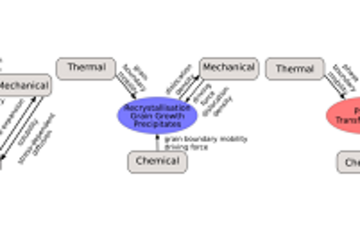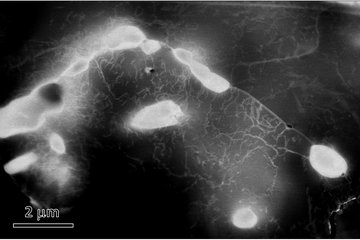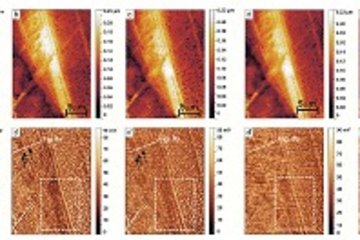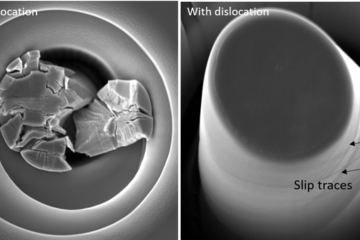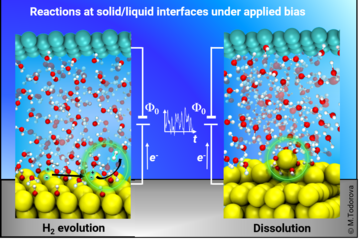All genres
41.
Talk
Structure, chemistry and thermodynamics of Lattice Defects. Colloquium of the Department of Materials Science and Engineering, Ohio State Universitry, online, Columbus, OH, USA (2021)
42.
Talk
Development of superalloys driven by atomic-scale interactions of solutes with crystal defects. TMS 2021 Annual Meeting & Exhibition, online, Pittsburgh, PA, USA (2021)
43.
Talk
Chemistry and Structure at Lattice Defects studied at the Atomic Scale. 4th Symposium Core Research Cluster Materials Science & 3rd Symposium on International Joint Graduate Program in Materials Science, Tohoku University, online, Tohoku, Japan (2020)
44.
Talk
Revealing the dependence of Au segregation on dislocation character in Pt–Au via cross-correlative microscopy. APT&M 2020, virtual, Oxford, UK (2020)
45.
Talk
Basic Research Opportunity and Leverage Effects in Sustainable Metallurgy. Workshop: New Frontiers in Materials Science and Engineering – Sustainable Metallurgical Processes with improved CO2 efficiency, RWTH Aachen, online, Aachen, Germany (2020)
46.
Talk
Understanding deformation mechanisms in superalloys through atomic scale microanalysis. TMS 2019 Annual Meeting & Exhibition, San Antonio, TX, USA (2019)
47.
Talk
Phase field modeling of dislocation cross slip. European Mechanics of Materials Conference, Brussels, Belgium (2016)
48.
Talk
Strongly versus weakly non-local dislocation transport and pile-up. 24th International Congress of Theoretical and Applied Mechanics, Montreal, Canada (2016)
49.
Talk
Two-scale FE-FFT phase-field-based computational modeling of bulk microstructural evolution and nanolaminates. 12th World Congress on Computational Mechanics, Seoul, South Korea (2016)
50.
Talk
Comparison of algorithms and solution methods for classic and phase-field-based periodic inhomogeneous elastostatics. ECCOMAS Congress 2016, Crete, Greece (2016)
51.
Talk
Atomistic and phase-field modelling of nanoscopic dislocation processes. Dislocation based Plasticity, Kloster Schöntal, Schöntal, Germany (2016)
52.
Talk
Periodic molecular dynamics modeling of dislocation-stacking fault interaction. GDRi CNRS MECANO General Meeting on the Mechanics of Nano-Objects, MPIE, Düsseldorf, Germany (2013)
53.
Talk
Molecular Dynamics-Based Modeling of Dislocation-Stacking Fault Interaction. 84th Annual Meeting of International Association of Applied Mathematics and Mechanics (GAMM), Novi Sad, Serbia (2013)
54.
Talk
Modeling and calculation of the stacking fault free energy of iron at high temperature. International Workshop Molecular Modeling and Simulation: Natural Science meets Engineering, Frankfurt a. M., Germany (2013)
55.
Poster
Comparison of Methods for Discontinuous and Smooth Inhomogeneous Elastostatics. 24th International Congress of Theoretical and Applied Mechanics, Montreal, Canada (2016)
56.
Teaching
Sustainable Materials Science and Green Metallurgy (Sustainable Materials and Metallurgical Science & Engineering). Lecture: SS 2021, RWTH Aachen University, 2021-04 - 2021-07
57.
Newspaper Article
An artificial neural network for surrogate modeling of stress fields in viscoplastic polycrystalline materials. npj Computational Materials 9 (1), p. 37 (2023)
58.
Preprint
Effect of Pore Formation on Redox-Driven Phase Transformation. arXiv (2022)
59.
Preprint
An artificial neural network for surrogate modeling of stress fields in viscoplastic polycrystalline materials. arXiv (2022)
60.
Preprint
Lossless Multi-Scale Constitutive Elastic Relations with Artificial Intelligence. arXiv (2021)




